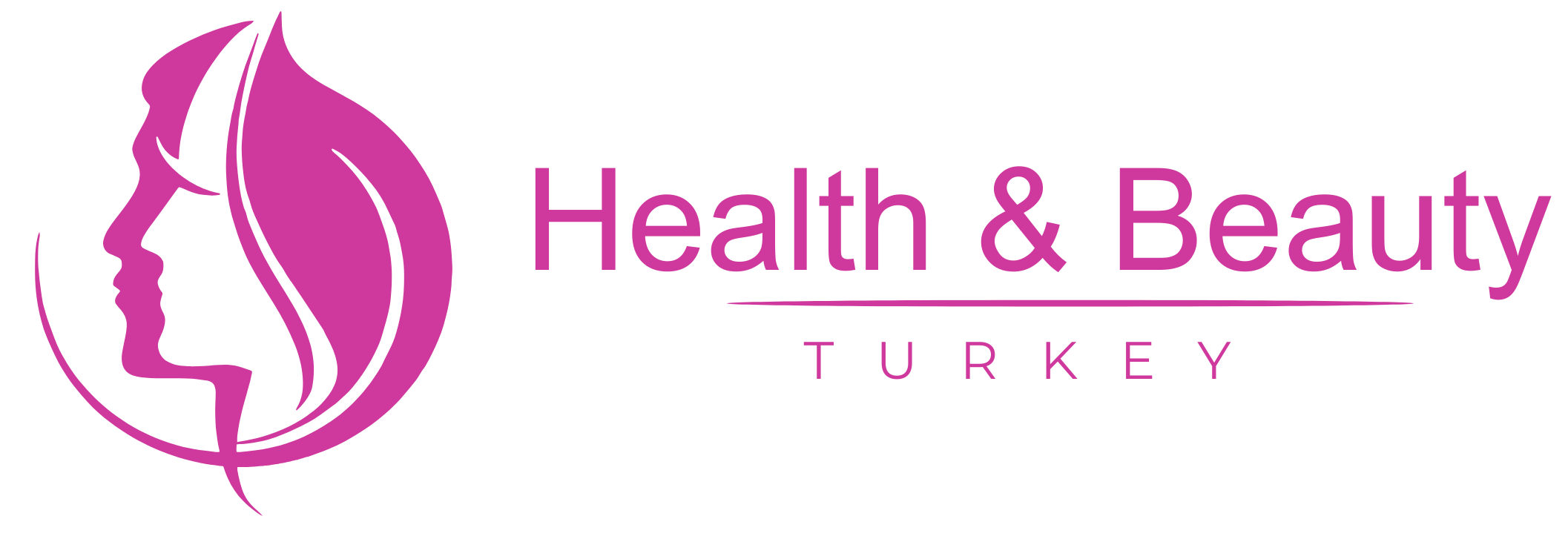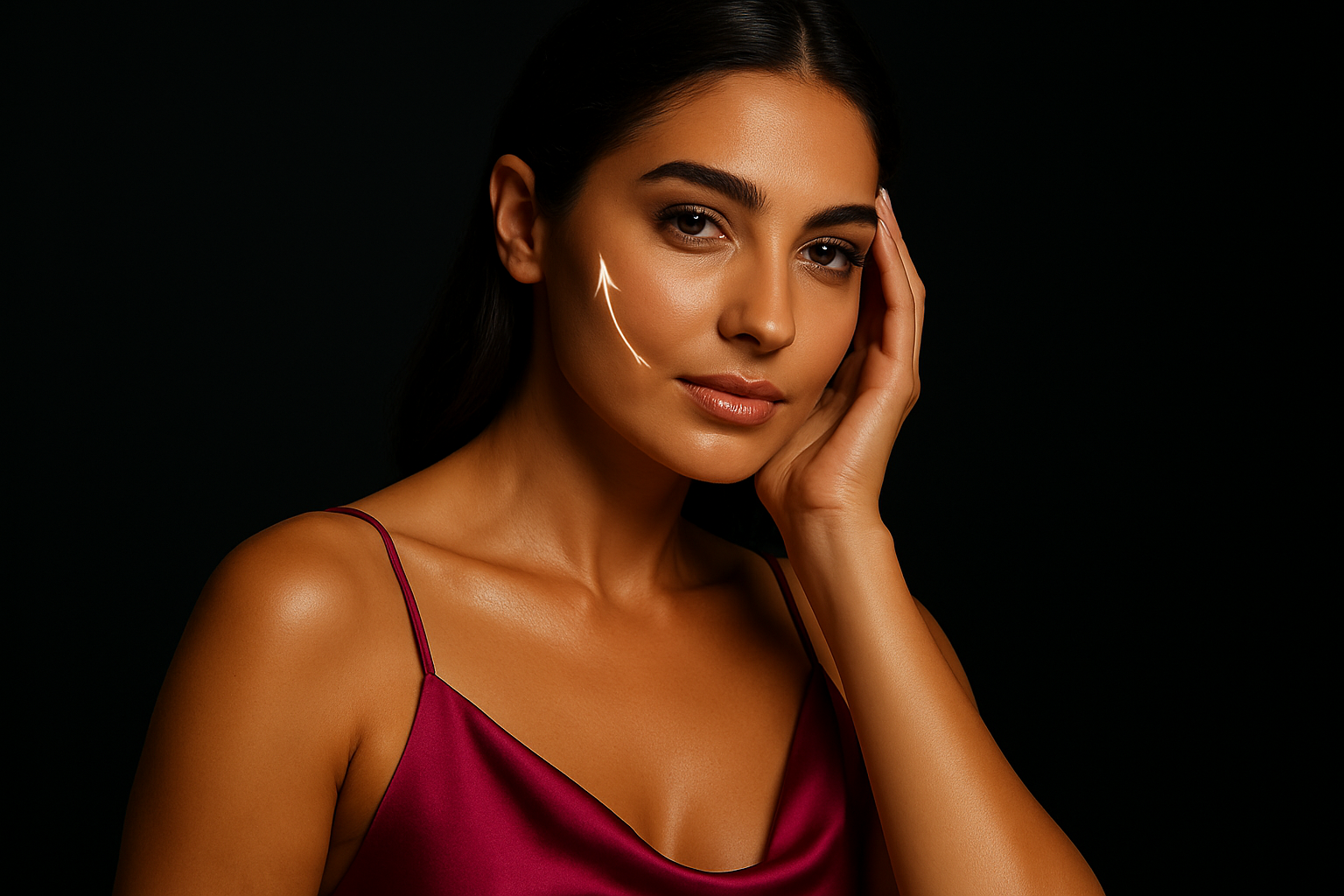Introduction
Skin deformities, whether resulting from burns, deep wounds, skin diseases, or even the effects of previous surgeries, are a source of both physical and psychological discomfort. They not only affect external appearance but can also limit a person’s ability to lead a normal life and negatively impact their self-confidence. In such cases, the skin grafting surgery stands out as an effective and advanced solution for restoring normal skin texture, improving appearance, and recovering the lost skin function.
Turkey is recognized as a leading destination in medical tourism, particularly in the field of cosmetic and reconstructive surgery. With its highly experienced doctors, advanced techniques, and modern infrastructure, Turkey has become a focal point for patients from around the world seeking scar treatment through skin grafting with the highest standards of quality and safety. At “Health and Beauty Turkey Center”, we are committed to providing the best treatment solutions for our patients, with a focus on their safety and satisfaction.
We fully understand that considering any surgical procedure may raise some concerns and questions, especially regarding outcomes and potential complications. For this reason, we place the utmost importance on providing comprehensive and transparent information, answering all your questions, and emphasizing our commitment to the highest safety standards, including providing insurance against complications from medical tourism to ensure your peace of mind.
Medical Background: A Deeper Understanding of Skin Grafting
Skin grafting, also known as skin transplantation, is a medical procedure in which a piece of healthy skin is removed from one area of the body (called the donor site) and transplanted to another area where the skin is damaged or lost. The primary aim of this procedure is to cover the affected area and restore its appearance and function as much as possible.
Causes of Skin Deformities:
- Burns: Burns, especially severe ones, are among the most common reasons for needing skin grafting. When the deeper layers of skin are damaged by burns, they may not heal properly, necessitating a graft for restoring skin integrity.
- Deep Wounds and Injuries: Deep wounds resulting from accidents, serious injuries, or skin tears may lead to significant loss of skin tissue, requiring grafting.
- Skin Diseases: Some skin diseases such as severe pressure ulcers, diabetic ulcers, or severe infections leading to extensive skin damage may require skin grafting.
- Excision of Skin Tumors: When large skin tumors are excised, especially malignant ones, they may leave a significant gap in the skin that needs to be rebuilt with skin grafting.
- Congenital Deformities: Sometimes, congenital skin deformities may occur that can be partially or fully corrected through skin grafting.
- After-effects of Previous Surgeries: Some surgeries may leave significant scars that need improvement through skin grafting.
Risk Factors:
Risk factors are not limited to the cause of the deformity itself but also include factors related to the patient’s overall health, such as:
- Peripheral Vascular Diseases: Poor circulation in the extremities may hinder the healing process.
- Diabetes: Diabetes can affect the body’s ability to heal and increase the risk of infection.
- Weakened Immune System: Patients with weakened immune systems (due to certain diseases or medications) may be more susceptible to infections and delayed healing.
- Smoking: Smoking negatively affects circulation and the skin’s ability to heal.
- Obesity: Obesity may increase the difficulty of healing and subject the area to additional stress.
Symptoms:
The symptoms depend directly on the size and location of the skin deformity. They may include:
- Loss of Skin Tissue: The appearance of an area of skin bereft of normal skin.
- Pain: Especially if there are exposed nerves or inflammation.
- Bleeding: Bleeding may occur from the affected area.
- Change in Color and Texture: The affected area may be darker or lighter in color and feel firmer or rougher than the surrounding skin.
- Functional Limitations: In crucial areas like joints or hands, the deformity may cause difficulty in movement.
Diagnosis:
The diagnosis for the need for skin grafting begins with a comprehensive medical evaluation of the condition. The doctor will:
- Clinical Examination: Assess the size and extent of the deformity, its depth, and its health condition (Is there an infection? Are the surrounding tissues healthy?).
- Medical History: Ask the patient about the cause of the deformity, their health history, and any medications they are taking.
- Diagnostic Imaging: In some cases, imaging techniques may be used to assess the extent of tissue damage beneath the skin or to evaluate circulation in the area.
- Laboratory Tests: General blood tests may be requested to assess the patient’s overall health and ensure no issues may impact the surgical procedure or healing.
Recent Research Updates:
The field of skin grafting is witnessing continuous developments, and recent research aims to improve outcomes and reduce complications. Some of the most notable advances include:
- Stem Cell Transplantation Techniques: Research is being conducted on using stem cells extracted from the patient to enhance new skin growth and accelerate the healing process, thereby reducing the size of the required donor site.
- Skin Substitutes: Development of synthetic or natural materials that mimic skin structure, used as a temporary or permanent cover for damaged areas, aiding their healing and reducing the need for extensive grafting.
- Using Laser and Ultrasound: These techniques are sometimes used to improve the quality of scars resulting from grafting or to prepare a good base for the recipient area.
- Microsurgery Techniques: In certain cases, microsurgery techniques can transfer complex tissues containing blood vessels and nerves, significantly improving the function of the grafted skin.
Suitable Candidates for Skin Grafting
The skin grafting surgery is an effective treatment option for many; however, like any medical procedure, there are criteria to determine the patient’s suitability.
Who Are Good Candidates?
- Patients with Significant Skin Deformities: Such as extensive burns or deep wounds that cannot heal naturally.
- Patients Who Have Lost Large Areas of Skin: Due to injuries, tumor excisions, or skin diseases.
- Patients with Noticeable and Movement-Restricting Scars: Especially if they affect joint or limb function.
- Patients in Generally Good Health: Who can undergo surgery and recover properly.
- Patients with an Appropriate Donor Site: Any area of the body containing healthy and sufficient skin to take the required graft.
- Patients with Realistic Expectations: Who understand that the goal is improvement, not absolute perfection.
Who May Not Be an Ideal Candidate?
- Patients with Unstable Chronic Diseases: Such as uncontrolled diabetes, severe heart diseases, or significant immune deficiencies.
- Patients with Severe Malnutrition: Which affects the body’s ability to heal.
- Patients Who Smoke Heavily: It is usually advised to quit smoking well before the surgery.
- Patients with Active Infections in the Target or Donor Area.
- Patients Without an Appropriate Donor Site.
- Patients with Unrealistic Expectations: Expecting a perfect result that is unattainable with surgery.
Our medical team at “Health and Beauty Turkey Center” will conduct a thorough assessment of your case to determine if you are a suitable candidate for skin grafting and explain the most appropriate treatment options for you.
Preparing for Skin Grafting: Step by Step Towards Success
Good preparation for skin grafting surgery plays a crucial role in ensuring the success of the procedure and achieving the best possible outcomes. Preparation usually begins before traveling to Turkey and includes several aspects.
Before Traveling to Turkey:
- Initial Medical Consultation: The process often starts with an initial medical consultation online (via video or pictures) with our medical team. The doctors will evaluate your condition, discuss your goals, and provide an initial estimate of the results and treatment plan.
- Medical Information: You will receive detailed information about the procedure, potential risks, benefits, and recovery period.
- Necessary Vaccinations: Depending on your regional destination, you may need certain vaccinations, which you will be informed about.
- Travel Packages: At “Health and Beauty Turkey Center”, we often provide comprehensive packages including flight tickets, accommodation in comfortable hotels, and transportation to and from the airport and clinic, making it easier for you to plan your trip.
Necessary Medical Tests:
Upon arriving in Turkey and before the surgery, the patient will undergo a series of tests to ensure their readiness:
- Comprehensive Blood Test: Including complete blood count, kidney and liver functions, coagulation tests, and blood sugar levels.
- Electrocardiogram (ECG): To assess heart health, especially for patients over a certain age or with a cardiac history.
- Chest X-Ray: In some cases, to evaluate the lungs.
- Other Tests: The doctor may request additional tests based on the patient’s overall health and any special conditions.
- Assessment of Skin Condition: A thorough examination of the affected area and the donor site.
Healthy Tips and Lifestyle Modifications:
- Good Nutrition: A healthy, balanced diet rich in proteins, vitamins, and minerals should be emphasized to support the healing process.
- Hydration: Drinking sufficient amounts of water is essential for skin health.
- Quitting Smoking: If you are a smoker, it is strongly advised to quit smoking at least a month before the surgery and continue to refrain during the recovery period, as smoking hinders blood flow and delays healing.
- Avoid Certain Medications: Your doctor may ask you to discontinue some medications and dietary supplements that may increase the risk of bleeding, such as aspirin and non-steroidal anti-inflammatory drugs, and some herbal supplements.
- Stress Management: Try to remain calm and reduce stress, as mental relaxation plays a role in recovery.
Our team at “Health and Beauty Turkey Center” will provide you with a detailed list of instructions and preparations that you need to follow before your surgery date.
Steps of Skin Grafting: From Consultation to Recovery
Skin grafting surgery is a precise procedure requiring careful planning and craftsmanship. The process involves several main stages, starting from the initial consultation to the recovery phase.
1. Before the Surgery: Preparation and Assessment
- Detailed Consultation: After your arrival in Turkey, you will undergo a detailed consultation with your surgeon. During this session, the following will be done:
- Review of your complete medical history.
- Examine the affected area and assess its size and depth.
- Determine the ideal donor site, considering the quantity and quality of available skin.
- Discuss the type of skin graft that is most suitable for your condition (Full-thickness graft, split-thickness graft, mesh graft).
- Explain the details of the procedure, the expected outcomes, and potential risks.
- Answer all your questions and inquiries.
- Final Tests: Complete any necessary medical tests to ensure your full readiness.
- Anesthesia: The anesthesiologist will discuss available anesthesia options with you, depending on the size of the procedure and the location of the affected area. This may include:
- Local Anesthesia: Used for smaller areas.
- Regional Anesthesia: To anesthetize a larger area of the body.
- General Anesthesia: Used in complex cases or when complete patient comfort is needed.
2. During the Surgery: Surgical Techniques
The course of the surgery varies depending on the type of skin graft used:
- A. Skin Grafting:
- Taking the Graft from the Donor Site:
- Full-Thickness Graft: Involves taking both the epidermis and dermis layers completely from the donor site. These grafts are usually used for the face, neck, and sensitive areas where appearance is important. The donor area after taking the full graft may need to be sutured to close the wound.
- Split-Thickness Graft: Involves taking the outer layer of skin (epidermis and part of the dermis). This technique is suitable for covering large areas and is typically used in areas such as limbs and the trunk. The donor site heals on its own over time.
- Mesh Graft: In this technique, small holes are made in the taken skin graft (partial thickness) to expand it to cover a larger area. This allows fluids to escape and helps it heal better in open areas, but may result in a mesh pattern on the new skin.
- Preparing the Recipient Area: The affected area is cleaned, and any damaged or dead tissues are removed to prepare a suitable environment for the graft to heal.
- Transplanting the Graft: The skin graft is carefully placed over the recipient area and sutured or secured using surgical pins or special adhesives.
- Dressing: Special dressings are applied to protect the graft, ensure good contact with the recipient area, and prevent the formation of voids underneath that could lead to fluid accumulation.
- Taking the Graft from the Donor Site:
- B. Flap Surgery:
In some cases, when the affected area is extensive or too deep, or requires deeper layers of skin and tissues (such as muscles and blood vessels), the surgeon may resort to flap surgery technique. In this technique, a piece of skin and tissue is moved while maintaining its connection to the donor area via a blood vessel, then directed to cover the affected area. This technique is more complex and requires fine surgical skills, and is often used in cases of reconstructing limbs or the face after severe trauma.
3. After the Surgery: Immediate Care
- Monitoring: You will remain under monitoring in the recovery room to ensure the stability of your vital signs after the anesthesia has worn off.
- Pain Management: Pain relievers will be prescribed to manage any feelings of pain.
- Wound Care: Dressings will be changed regularly according to the surgeon’s instructions, ensuring the wounds are clean.
- Elevation of the Affected Area: In some cases, it may be advised to elevate the area where the skin graft was performed to reduce swelling.
- Medical Follow-up: The medical team will monitor for signs of infection or any other complications.
4. Recovery Period: The Healing Journey
The recovery period varies significantly depending on the size of the procedure, the type of graft, the patient’s health condition, and their adherence to post-operative instructions.
- First Stage (Week 1-2):
- Initial Healing: At this stage, the skin graft starts to integrate with the recipient area.
- Changing Dressings: The initial dressings will be carefully removed to reveal the graft and assess the success of the healing.
- Rest: Complete rest and avoidance of any physical effort is advised.
- Hygiene: Keeping the wounds clean to prevent infection.
- Second Stage (Weeks 3-6):
- Formation of Scars: Scars start to form and heal. They may be red or pink initially and will continue to improve over time.
- Movement Restrictions: Some restrictions on movement may persist, especially if the graft is in a joint area.
- Light Activities: Some light activities can gradually be started, according to the doctor’s instructions.
- Third Stage (After 6 Weeks to Several Months):
- Improvement in Appearance: Redness gradually decreases, and the graft begins to better integrate with the surrounding skin.
- Functional Recovery: Normal function of the area often gradually returns.
- Scar Care: Use of special creams or gels for scars to improve their appearance may be advised.
- Sun Protection: The new skin is sensitive to sunlight, and it should be well protected.
When to Expect Results?
Initial results appear as soon as the graft has successfully integrated, but continuous improvement in color and texture may take several months to a year or more. The primary objective is restoring skin integrity, improving appearance, and regaining function as much as possible.
Modern Treatment Options in Turkey
Turkey is at the forefront of countries offering the latest techniques in skin grafting and cosmetic surgery. At “Health and Beauty Turkey Center”, we rely on the best advancements in science and medicine to ensure our patients achieve the best results.
Innovative Techniques:
- Microsurgical Techniques: In some complex cases, surgeons may use microsurgical techniques to transfer skin parts with associated blood vessels and nerves, providing superior functional and aesthetic results.
- Use of Synthetic Skin Substitutes: These advanced materials are used to cover large areas of wounds and burns, reducing the need for large amounts of the patient’s skin and accelerating the healing process.
- Tissue Expansion Techniques: In some cases, tissue expanders may be used to increase the quantity of healthy skin available in an adjacent area, using this excess skin to cover the damaged area.
- Stem Cell Therapy: Recent research aims to integrate stem cell therapy with skin grafting to enhance tissue renewal and improve the quality of the new skin.
Advantages of Treatment at “Health and Beauty Turkey Center”:
- Doctor Expertise: Our center includes a team of highly experienced plastic and reconstructive surgeons with international certifications, specializing in the latest techniques of skin transplantation.
- Advanced Technology: We use the latest devices and surgical techniques to ensure precision and efficiency while minimizing recovery time.
- Modern Facilities: We provide a safe and comfortable treatment environment, with clinics equipped with the latest technology and hospitals meeting international standards.
- Comprehensive Care: We offer an integrated service that begins with the initial consultation, through surgery, to the recovery and follow-up period, including translation and logistical assistance services.
- Competitive Prices: We offer competitive prices compared to Western countries while maintaining the highest quality standards.
- Insurance Against Complications: We provide our patients with peace of mind through insurance against complications from medical tourism.
Addressing Patient Concerns: Safety and Reassurance
We recognize that contemplating any surgical procedure, especially skin grafting surgery, may raise natural concerns about potential complications. At “Health and Beauty Turkey Center”, the safety of our patients is our top priority, and we are committed to providing the highest levels of safety.
Potential Risks and Complications:
Like any surgical procedure, skin grafting may involve some risks, which we will discuss transparently. These risks include (but are not limited to):
- Infection: Infections may occur in either the donor or recipient area.
- Bleeding: Bleeding may happen during or after the surgery.
- Graft Failure: The graft may not heal completely, especially in difficult cases or where circulation issues are present.
- Changes in Sensation: Numbness or altered sensation may occur in the grafted or donor area.
- Formation of Visible Scars: Prominent or undesirable-looking scars may develop.
- Skin Shrinkage: The graft may shrink over time, affecting movement.
Insurance Against Complications from Medical Tourism: A Guarantee for Your Peace of Mind
To alleviate any concerns regarding potential complications, we offer our patients insurance against complications from medical tourism. This insurance is part of our commitment to providing comprehensive and safe care, providing you protection and support in the event of any unexpected consequences.
What Does the Insurance Cover?
- Hospital Treatment Coverage: The insurance covers hospital treatment costs in case hospitalization is needed for complications related to the procedure.
- Duration of Coverage: The insurance is valid for six months from the date of the surgery, providing you ample time for recovery and follow-up.
- Re-Surgery Coverage (If Necessary): In case the condition requires a revision surgery to correct complications, the insurance covers part of these costs, including necessary travel and accommodation costs if a repeat surgery is required.
- Certified Clinics: This insurance applies only to clinics and hospitals approved by the Turkish Ministry of Health, ensuring compliance with the highest quality and safety standards.
This insurance is a testament to our confidence in the quality of care we provide and guarantees you will receive full support throughout your treatment journey.
Practical Tips for Patients: A Complete Treatment Journey
The experience of treatment in Turkey goes beyond just the medical procedure; it also includes proper preparation for the trip, enjoying your stay, and adhering to instructions after you return.
Travel Tips:
- Early Planning: Begin planning your trip well in advance, especially regarding booking flights and accommodations.
- Comfortable Travel Bag: Bring loose, comfortable clothing, and easy-to-wear shoes.
- Personal Medications: Don’t forget any personal medications you take regularly, along with any prescriptions.
- Necessary Documents: Keep your passport, entry visa (if necessary), flight tickets, hotel bookings, and all medical documents in a secure place.
- Communication: Ensure that your mobile phone works in Turkey, or consider purchasing a local SIM card.
Mental Preparation:
- Realism: Set realistic expectations regarding the outcomes of the procedure.
- Communication with the Medical Team: Don’t hesitate to ask any questions or express any concerns you may have.
- Relaxation: Try to enjoy your time in Turkey and visit nearby attractions (after consulting your doctor).
- Family Support: Having a companion from family or friends can be very supportive during the treatment and recovery period.
Lifestyle Tips Post-Treatment:
- Follow the Doctor’s Instructions Precisely: Adhere to appointments, change dressings, and take prescribed medications.
- Healthy Nutrition: Consume a diet rich in proteins and vitamins to support tissue healing.
- Hydration: Drink plenty of water.
- Avoid Direct Sun Exposure: The new skin is very sensitive to the sun; use sunscreen consistently.
- Physical Activities: Consult your doctor about when you can resume sports and physical activities.
- Scar Care: Follow your doctor’s recommendations to improve the appearance of scars.
- Regular Follow-up: Keep follow-up appointments with your doctor to assess the healing status.
Price of Scar Treatment through Skin Grafting in Turkey
Determining the price of scar treatment through skin grafting in Turkey is subject to several variable factors, making it difficult to provide a fixed number. However, based on an analysis of prevailing market rates in Turkey for the latest techniques and procedures, an average cost estimate can be provided.
Generally, the cost of skin grafting in Turkey, including consultation, surgery, anesthesia, and initial follow-up, ranges between $1,500 and $4,500.
Factors Affecting the Price Include:
- Size and Area of the Skin to be Grafted: The larger the area, the greater the complexity and cost.
- Depth of the Deformity: Cases requiring deep grafting or flap techniques are more expensive.
- Type of Skin Graft Used: Full-thickness grafts or flap grafts may be more expensive than partial grafts.
- Surgeon Experience and Clinic Reputation: Highly experienced surgeons and clinics with a stellar reputation may charge higher prices.
- Geographical Location of the Clinic: Prices may vary between major cities such as Istanbul and Ankara.
- Technology Used: The use of advanced techniques or modern equipment may affect the cost.
- Additional Costs: Such as accommodation, flight tickets, transfers, and translation, which are often offered as comprehensive packages.
At “Health and Beauty Turkey Center”, we offer free consultations to accurately assess your case and provide a detailed and suitable price quote tailored to your needs, ensuring full transparency regarding all costs.
Why Choose “Health and Beauty Turkey Center”?
At “Health and Beauty Turkey Center”, we combine high medical expertise, advanced techniques, and comprehensive care to offer a unique treatment experience for our patients.
- Our Doctors’ Expertise: Our surgeons have a proven track record of success in performing skin grafting surgeries and many other cosmetic and reconstructive procedures. They stay up-to-date with the latest medical developments and apply them in serving their patients.
- Integrated Services: We provide full support, including:
- Airport Reception and Transportation: Ensuring your arrival is easy and comfortable.
- Hotel Accommodation: In comfortable hotels close to medical centers.
- Specialized Translators: Facilitating smooth communication between you and the medical team.
- Medical Follow-up: Post-operative care and providing necessary support throughout your stay.
- Safety and Trust: We adhere to the highest international safety standards and offer insurance against complications from medical tourism to ensure your peace of mind.
- Outstanding Results: Our goal is to achieve the best possible results, restoring your natural appearance and enhancing your quality of life.
Frequently Asked Questions
Q: Is skin grafting painful?
A: During the procedure, anesthesia is used to alleviate the pain. After the surgery, you may feel some pain, but it can be controlled with pain relievers prescribed by the doctor.
Q: How long does the recovery period after skin grafting take?
A: Recovery times vary, but initial healing usually takes two weeks, and improvements in appearance and function may continue for several months. This depends on the size of the procedure and the patient’s health condition.
Q: Does skin grafting leave scars?
A: Yes, scars form in both the donor and recipient areas. Surgeons aim to minimize scar visibility, and over time, scars become less noticeable.
Q: Can skin grafting be used to cover old scars?
A: In some cases, skin grafting can be used to improve the appearance of old scars or cover areas with deep scarring, but this will be assessed by the surgeon.
If you suffer from skin deformities affecting your appearance and self-confidence, skin grafting surgery in Turkey offers you a chance to restore your beauty and skin function. Turkey combines advanced medical expertise, modern techniques, and competitive prices, making it your ideal destination for medical tourism.
At “Health and Beauty Turkey Center”, we are committed to providing you with the highest levels of care, from the initial consultation to complete recovery. With our expert medical team, our advanced infrastructure, and our insurance against complications, we guarantee you a safe and successful treatment experience.
Don’t let skin deformities limit your life. We invite you today to contact our medical representative for a free consultation. Let us help you on your journey to regain self-confidence and beauty.
Contact us now to start your transformation journey!




